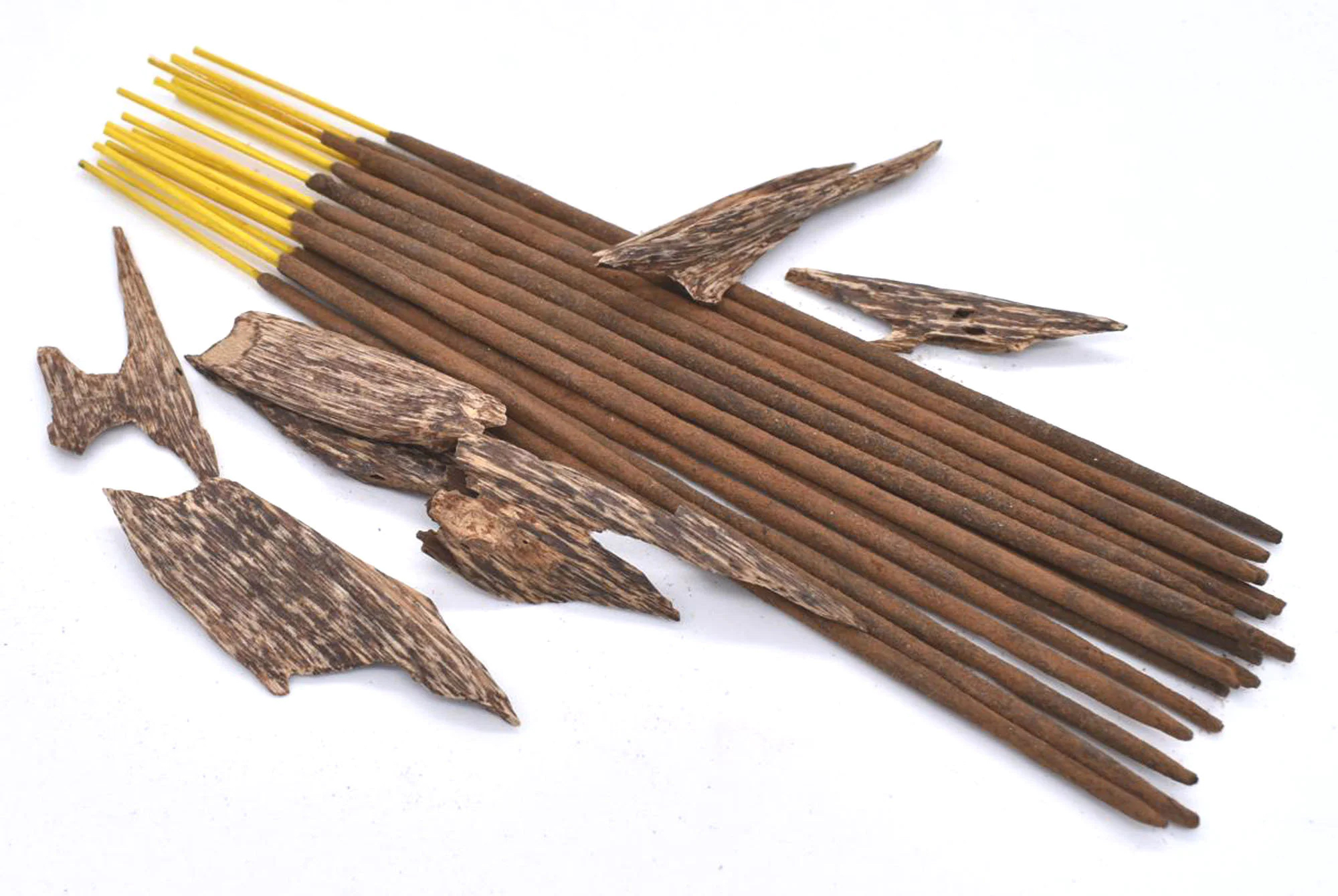Agarwood Incense have both been burned since before the beginning of written time and feature in a massive amount of religious and cultural rituals and practices the world over. Deeply primal, psychoactive and incredibly unique, the scent of fine agarwood is widely considered to be one of the very best scents for meditation and yoga, as well as many spiritual practices.
Agarwood incense as an air steriliser
And a 1995 study in China found that the antibacterial qualities of Chinese herbal incense made it as effective an air steriliser in hospital wards as methods such as ultraviolet radiation and formaldehyde (Yan XY, Zhang GR, Song XY. Study on Chinese herb incense to disinfect wards’ air. Chung-Hua Hu Li Tsa Chih Chinese Journal of Nursing 1995; 30(6):323-324) From my own experience, I used agarwood incense to eliminate mouldy odour from my car on rainy days. Wet shoes stepped into your car, create a perfect environment for fungus. The sun light is the best solution here. To speed up the process, I burn a small burning incense stick inside my car for 10 minutes and amazingly, the mouldy smell has gone.The scientific community is increasingly recognizing the value of various ancient products. For instance, in 1991, the Tropical Metabolism Research Unit at the University of the West Indies in Jamaica discovered that myrrh has pharmacological benefits in reducing cholesterol and triglyceride levels. In Japan, a study conducted in 2006 at the University of Toyama’s Institute of Natural Medicine revealed that agarwood has a significant impact on the expression of brain-derived neurotrophic factor in rats. This effect helps support the survival of existing neurons and promotes the growth of new neurons and synapses. Additionally, a study carried out in China in 1995 demonstrated that Chinese herbal incense possesses antibacterial properties, making it as effective as methods like ultraviolet radiation and formaldehyde for air sterilization in hospital wards. Throughout history, incense has been utilized to enrich prayer experiences and promote bodily equilibrium. Modern scientific research confirms the efficacy of incense: frankincense has been discovered to possess antidepressant properties, myrrh has the ability to lower cholesterol levels, and agarwood is shown to stimulate the growth of new neurons and synapses in the brain.Agarwood, also known as aloeswood, is derived from the Aquilaria tree found in tropical rainforests. This unique wood undergoes a transformation facilitated by an infectious mold, resulting in the conversion of its light heartwood into a dark, resin-embedded heartwood. The ethereal aroma of agarwood has long been cherished in Asia for its use in ceremonial incense and traditional medicine as a sedative. Agarwood is believed to have several beneficial effects, including calming the nervous system, dispelling negative energies, promoting alertness, alleviating anxiety, inducing a sense of strength and tranquility, and enhancing cognitive function. In Tibetan Buddhist traditions, agarwood is revered for its ability to energize the mind and spirit, foster motivation, and cultivate the necessary devotion for meditation Cunningham (1999), the author of “The Complete Book of Incense, Oils, and Brews”, has a short description of “Aloe wood”, one of the incense-making ingredients. Please note this book was written in 1999; at that time, high-grade agarwood was around several hundred per kg, 30 times less compared to 2016Spiritually, Agarwood incense offers protection, consecration, success and prosperity.That is why you often see people use Agarwood incense when they pray for their inner peace.According to her, Agarwood or Aloeswood is scientifically known as Aquilaria agallocha, is a tree indigenous to India and is referred to by various names such as lignaloes, oriental lignaloes, wood aloes, and lignum aloes. The wood emits a fragrance that combines the scents of ambergris and sandalwood. In cases where this particular wood is not available, it can be substituted with an equal amount of sandalwood accompanied by a few drops of synthetic ambergris for the purpose of making incense.As previously mentioned, the cost of purchasing wood aloe in San Diego was approximately $30 per pound. Wood aloe is commonly utilized in incense blends aimed at providing protection, consecration, success, and prosperity.

